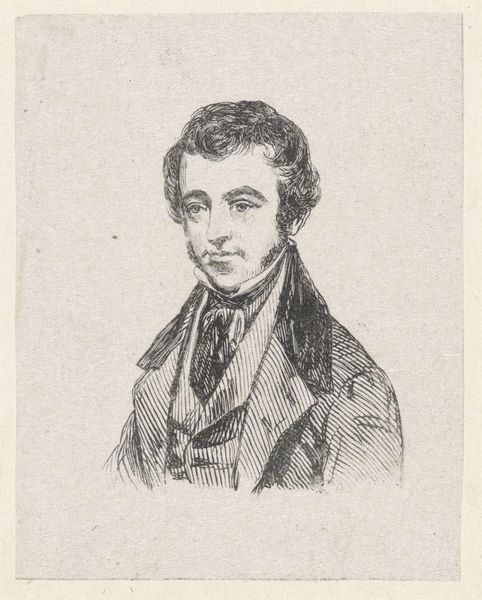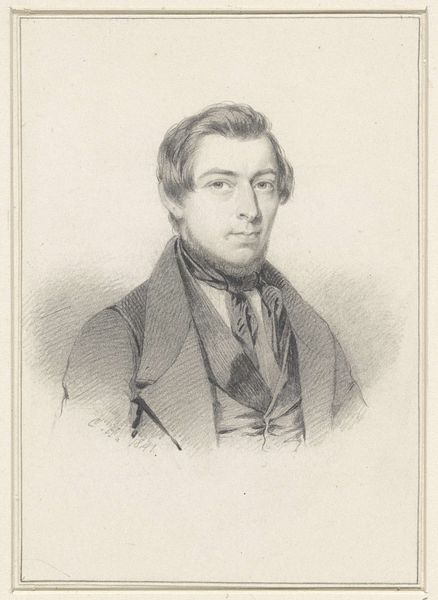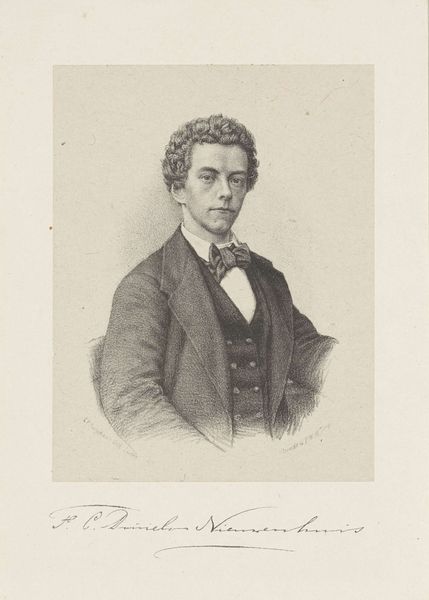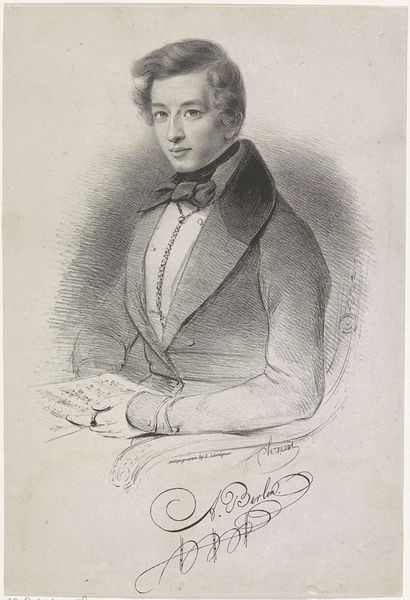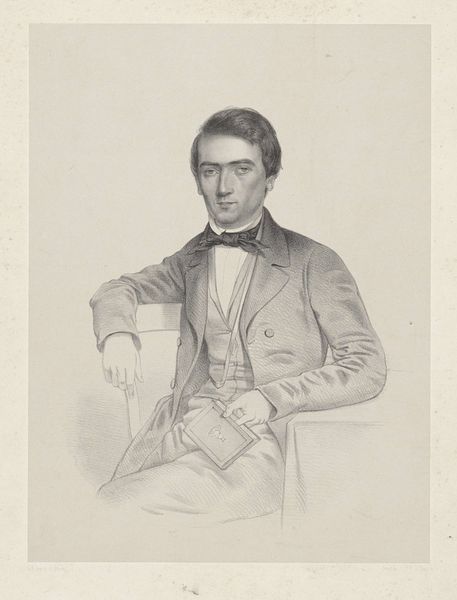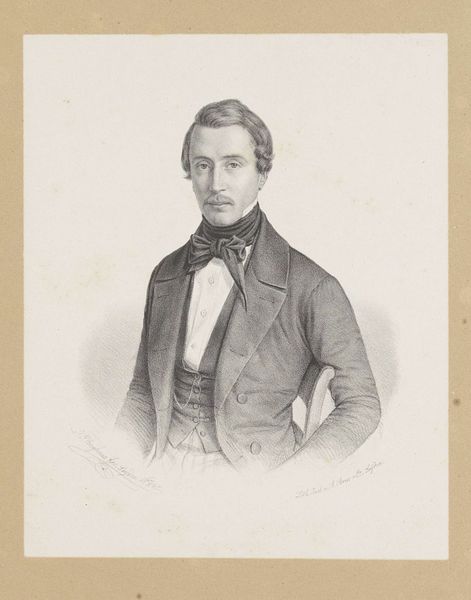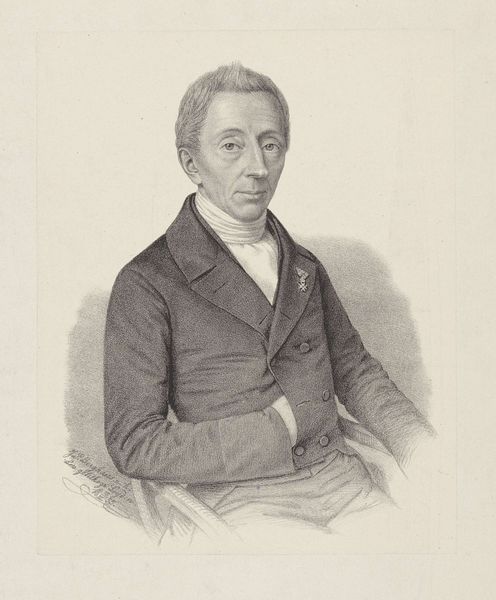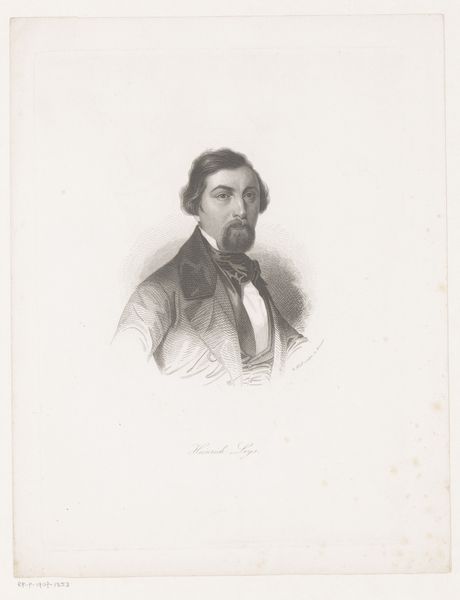
drawing, pencil, graphite
#
portrait
#
drawing
#
figuration
#
romanticism
#
pencil
#
graphite
Dimensions: height 216 mm, width 150 mm
Copyright: Rijks Museum: Open Domain
Curator: Standing before us is a self-portrait by Cornelis de Cocq, created in 1843. The work, residing here at the Rijksmuseum, is rendered with graphite and pencil. Editor: My immediate impression is one of subdued intensity. The sharp contrasts, despite the monochrome palette, create a strong sense of presence. The light seems to emphasize his penetrating gaze. Curator: Precisely. This piece really epitomizes the Romantic era's preoccupation with the self. Look closely, and you’ll notice the fashionable attire and carefully coiffed hair that suggest the artist's conscious crafting of his public image within the bourgeois society of the time. The slight asymmetry perhaps reveals the subtle cracks within this constructed facade. Editor: Absolutely. The texture is fascinating as well; you see how the delicate lines create subtle gradations of tone. It is masterfully rendered and adds dimension and conveys character. It transcends simple representation and suggests psychological depth. Curator: I would say this particular approach—that very pursuit of detail—is absolutely key to his socio-political standing as an intellectual during this period of burgeoning nationalism in the Netherlands. The fact that he chose to depict himself shows an intentional embrace of the artist as an important and active voice. It positions him as a key protagonist in the burgeoning cultural and social landscape. Editor: Well, looking at the composition alone, the way the light models the planes of his face—notice especially how the shadows define the cheekbones and jawline—it is quite a successful manipulation of light and shadow to direct our eye, create depth, and draw the viewer to engage with him face to face. Curator: Yes, I think it is significant too that his gaze doesn’t quite meet ours. His directness, then, is slightly guarded. He seems thoughtful but also cautious in offering himself to the viewer, reminding us of the restrictions and expectations faced even by privileged white men. Editor: I hadn't thought about it in that way. Regardless, for me it boils down to how skillfully he has employed tonal values to render a striking three-dimensional form. It allows one to appreciate not only his artistic ability, but also the compelling nature of his gaze. Curator: Indeed. De Cocq gives us a fascinating insight into the identity constructions of his time. Editor: And we get a visual treat in appreciating the artistry on display here.
Comments
No comments
Be the first to comment and join the conversation on the ultimate creative platform.

